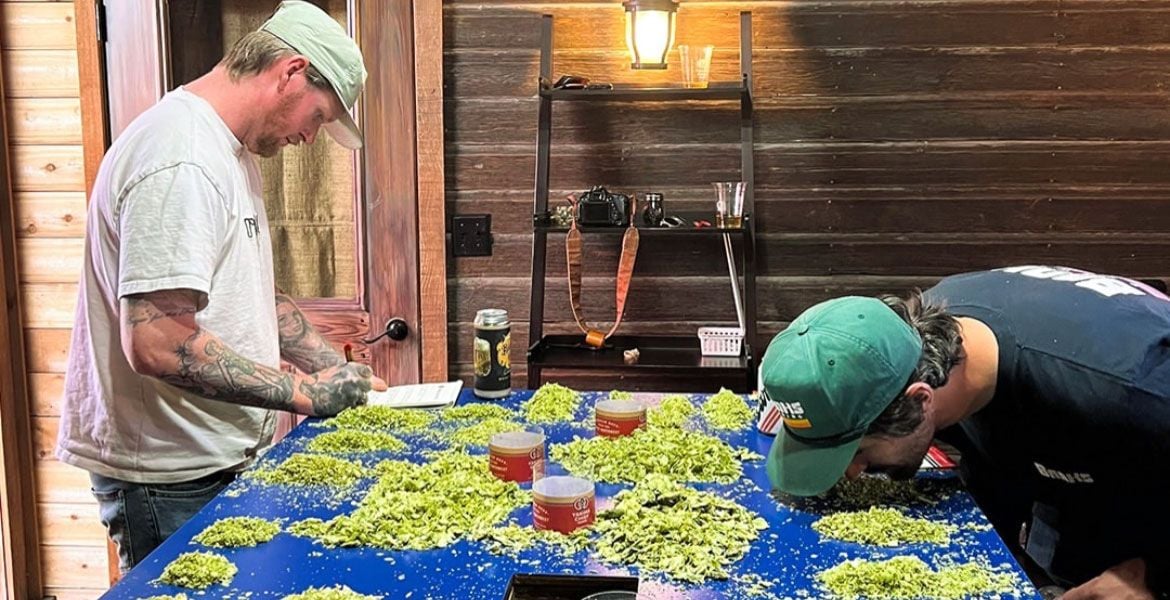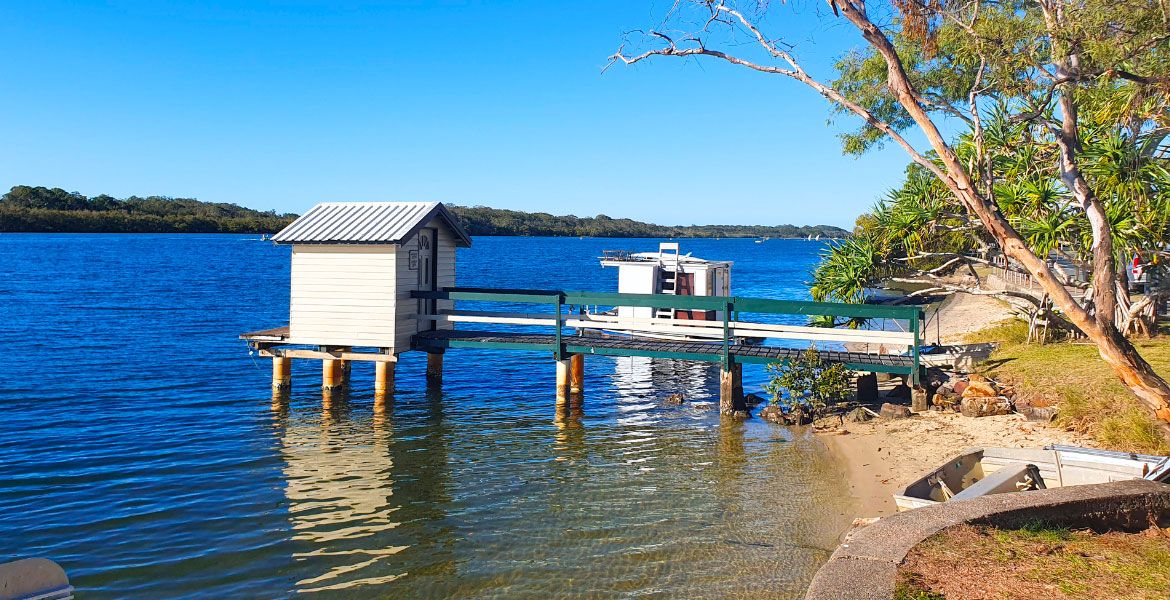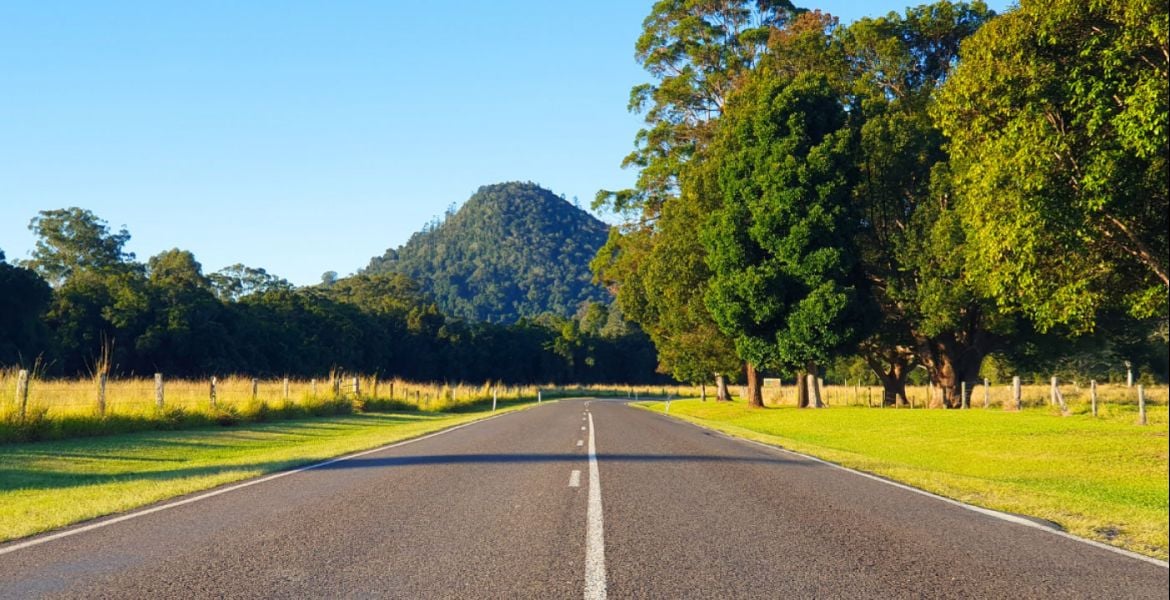Every two years, the beer world gathers in the States for the World Beer Cup, the biggest beer awards of its kind, which runs alongside the annual US Brewers Association Craft Brewers Conference. And each time, more and more Australians head over to be a part of what is a truly huge gathering.
Having spoken at last year’s CBC in Washington DC, this time The Crafty Pint wasn’t in attendance as the event returned to Denver. But we posed a few questions to a number of those from different parts of the local industry on their return to find out what they made of it.
What were your impressions of the Craft Brewers Conference/World Beer Cup?
Jamie Cook, co-founder of Stone & Wood
As always the CBC is huge affair, with some 9,000 people attending over the three days. For visitors from overseas it’s a real challenge to balance attending the sessions, checking out the trade expo, hitting as many local breweries and bars as possible and, of course, the compulsory networking.
The rate of growth of the small(ish) brewers continues and as the segment heads towards ten percent of total beer by volume and 15 percent by value there is some talk of “How far can it grow?” and “Will it be a bubble?” etc. [NB: The US craft beer industry has already suffered one major bubble burst back in the late 90s – Crafty] But an amazing statistic revealed during the opening address was that more than 30 percent of beer sold on premise in the US is craft beer (by the BA’s definition). When a segment has this strength in on premise, it’s here to stay.
The major concern expressed by the BA is around quality, and with some 1,700 breweries in planning there are reservations about this and what impact it could have on quality. Paul Gatza used his presentation to issue a stern and brutal warning: “There have been thousands of people working for more than 30 years to establish and grow this category … don’t fuck it up!”
Jaron Mitchell, co-founder of 4 Pines
In a nutshell, the scale blew my mind. Put it this way, If Lion or Fosters was in the US and was a US brewery, they would almost qualify as "small" enough to be part of the Brewers Association!! [Which represents craft brewers, although to a scale that allows them to include the Boston Beer Company – Crafty]
When you are talking about a "small guy" beer industry, comparatively 100 times the size of ours here in Australia, there is thinking, processes and job roles that don’t even exist over here yet. The majority of the gap in sophistication I noticed wasn’t actually around the final beers being produced and served, but was more about how these guys approach their businesses.
There was a lot of chatter around concepts like sustainability, genuine grain to glass thinking, the service and presentation of craft beer at brewpub level, managing business critical data / legal / compliance / OHS issues – things that the average Australian craft brewery hasn’t even had a chance to properly consider (let alone act on) yet.
And because of the fact the small guys are massive, they just have fat stacks of cash laying around!! We went to a Lagunitas / Left Hand party, where beers and bands were on them, with about 3,000 people in attendance!! As much as we’d love to do this here in Australia, it would send us bust about 20 times over.
But then there is the downside of sophistication.
With the industry being more advanced, you definitely picked up on a lot more fierce competition amongst small breweries in the US compared to Australia. There are numerous examples of breweries suing each other over issues like trademarks and branding disputes. There was even a session pretty much saying: âHey guys, let’s all be nice and love each other like we used to and don’t sue each other.â But then maybe that’s just Americans being litigious and we are all too chilled to ever see that sort of behaviour over hereâ¦
Chris McNamara, executive officer of the Craft Beer Industry Association
I was there to observe how the Brewers Association runs both the WBC and CBC and to say I was very impressed is really an understatement. I was lucky enough to spend a bit of time stewarding at the WBC so I was able to see how it was run back of house. It’s like a military operation but given the huge amount of beers and judges it needed to be.
From an award winners perspective it was great to see Australian craft beer represented by Endeavour’s bronze and through our brewing diaspora with Canada’s Steamworks and England’s Camden Town Brewery also taking medals.
The scale of the CBC is mind-blowing (see the photo taken at the opening keynote speech at top). The welcome reception was at the stadium where the Denver Broncos play. It might be a while until the CBIA books out the G for our conference.
And it was great to see so many Australians there as judges and conference attendees.
Tim Wills, brewery equipment supplier Premier Stainless Systems‘ man in Australia.
With 9,000, attendees it was huge – I think it was 30 percent over last year in Washington DC. The trade show had at least 20 brewery manufacturers along with hundreds of other booths serving the brewing industry. It was also very well attended by Australian and New Zealanders who shared a great camaraderie throughout the week.
I made contact with several individuals who are new to the industry and are looking to join the growing list of new breweries. I was also very impressed by the numbers of qualified World Beer Cup judges that represent Australia & New Zealand. I wish I could name them all because they do deserve recognition.
How do you think Australian beers match up to what you sampled in America?
JC
There are some great beers in the US and, of course, with so many breweries there are also some average beers. We all know that “hop forward” is a term that they use to describe their heavily hopped beers, and there are still plenty of them around.
If you had to use one word to describe the beers from the smaller brewers it would be “powerful”. Like their approach to most things here, it’s about bigger = better, and extreme = excellent.
BUT, if you actually look into what and who is driving the growth and providing the baseline volume for the category it is brewers that are managing to achieve balance in their beers. The green shoots of session beers and ‘heaven forbid’ lagers are taking hold, and I think this will be a growing trend as the breweries and the category mature.
That said, if you lined up the best beers in Australia with the best of the US they would stack up OK. It’s the weight of numbers that distorts things though. If you said arbitrarily that ten percent of the brewers were producing excellent beer, then there would be 280 excellent breweries in the US vs only 18 in Australia.
JM
When it came to like-for-like beers, Australian craft breweries have a lot to be proud of and our beers would easily hold their own compared to what I was drinking in the US. Whilst we didn’t scoop the pool at the WBC, on a proportionate basis we still did OK. And then two years ago we did better than OK.
I’d put this down to the subjective lottery component of the WBC. I was talking to one of the IPA judges after several beers one night. He said they were left with a line up 12 IPAs of which any could have been easily given the gold medal. But they still had to choose one, two and three. He said it was a tough job (drinking beer – real tough!!) and really it was a toss of the coin. It makes you wonder how often this is the case amongst styles.

Jamie Cook – 2nd left – and Jaron Mitchell – right – with Stone & Wood and 4 Pines colleagues Ross Jurisich and Richard Sweet
WBC aside, there is the anecdotal experience of drinking truckloads of beers (responsibly) whilst you are in the U.S. There are awesome beers and then there are some really bad beers and beers in between. For me, in no greater or less proportion than in Australia. [This was certainly our impression in 2013: some incredible beers, many decent beers and some dross – Crafty.]
In fact, in the opening address at the CBC, quality, quality and QUALITY (three times they mentioned it) was something the US industry is obviously very concerned about and for good reason.
Obviously, there is a greater proportion of 8 to 10 percent IPA hop monsters, but with excise in Australia making one of these cost $15 at the bottleshop as opposed to $5 in the US, there will always be a limit on how far this goes in Australia.
It’s pretty obvious, but the thing that really stood out was that the US beers we get here in Australia were tasting a lot better and fresher than we get them. And so they should. Add another three to four months of logistics by the time they get to us in Australia and naturally dissolved oxygen is going to take its toll.
We’ve done a few blind Pale Ale / IPA tastings here in the brewery at 4 Pines and it’s always the Australians that come out in the top half and the US IPAs and Pale Ales that come out in the bottom half – every time. The only real fair place we could do an Australia vs US blind taste off would be Tahiti / Fiji or somewhere else in the Pacific – of which I’m more than happy to be a part of. [We’re happy to help out – Crafty]
You already know it and talk about it regularly, but again it really hit home to me the importance of drinking fresh and as locally to the source as you can – provided the beer is good of course. Americans really seem to rally behind their local brewpubs for example, more than we do at this stage.
CM
I think Australian beers more than hold their own. Personally I got very bored with 7 and 8% hop monsters. I think Australian brewers have more of a focus on brewing a range that has something for everyone.
TW
Australian beers are getting better and better every year and as more breweries and venues make a commitment to better refrigeration in both storage and transport we will continue to improve in the draft beer market. The selections of fresh available bottled beers are second to none considering our population and number of breweries.
What lessons are you bringing back to Australia?
JC
Scale and distribution is what is growing the category, not the sheer number of small breweries. The larger, small breweries are the guys who are really breaking the ground held by the mainstream.
It just reinforced my view that we have a real challenge in Australia with scaling up. To provide real diversity and penetration of the mainstream we need some of our small brewers to grow. That means building capacity to brew and distribute their beer to keep up with the demand for better or good beer.
We need more breweries who are brave enough to give it a serious crack, to not be scared in offending or losing the support of their loyal fans as they grow, but to step up and manage the perception challenges of rapid organic growth. If drinkers think less of their favourite breweries because they are growing, then they really aren’t supporting them or the general industry.
We need more small brewers with scale for the sustainability and health of all small brewers.
If you look at the numbers in Australia, at the moment it’s the likes of Squires, Matilda Bay and Little Creatures that are seizing the real opportunity. Their combined volume growth last year was probably more than the combined annual volume produced by all of the small brewers.
If there aren’t small brewers stepping up to capture the opportunity that beer drinkers are giving us, then there are a couple of big brewers in town who will.
JM
It’s pretty easy to say what you’re going to do once you come back from something like this revved up and excited. And then you get locked into the day-to-day of getting beer out the door…
At a 4 Pines level, rather than doing it on the fly (as we currently do) we are really keen to take some time out of the day-to-day and really focus on some of the more aspirational goals of running a brewery such as sustainability in the brewery and a bit more deliberate thinking around how we want to give back to our local community. At the moment we just say yes to everything and don’t put a 12 month plan in place, for example. We really need to take the time out to put a plan around the soft stuff the same way we do for production and what beers are coming up.
At an industry level, after seeing the âdarker sideâ of the US craft brewing industry, I’m desperate to see we as Australian brewers keep on the community path we are on. If there are any differences, simply work it out with a good old fashioned pub fight and then be done with it.
And secondly, their industry is 110,000 people with soon to be 4,500 breweries. By virtue of size, we will never have as many personalities working the industry so, like the rest of Australia, someone in the beer industry will always be "the mate of a mate", which I genuinely feel will soften any potential blows – but it’s worth keeping this in our thoughts.

Premier Stainless at CBC 2014
CM
I spent a bit of time with the staff of the Brewers Association and attended a number of seminars with their state guilds so I’ve come back with some great contacts and a hopefully some good ideas that we can pursue at the CBIA.
I think the most important thing I have bought home from the trip though is simply a reaffirmation of the potential of our industry. Craft beer in the US is no longer a niche product. Over there it’s in every bar, restaurant, bottle shop, ball park. And everywhere you look it is being enjoyed by both men and women. We have a long way to go to be at that level but I don’t doubt we’ll be there one day.
TW
I don’t want to repeat myself but for me more refrigeration is the next step on many levels across the entire industry. There is already growth in the cold distributed craft beer market and with luck it will continue. I think from the questions asked at the CBC by attendees from the Southern Hemisphere is that we are going to see a lot more brew pubs that are serving 80% of their own product with complimenting guest taps and the key will be freshness.
Thanks for your time, guys. Plenty of food for thought.
If anyone is interested in attending the Australian Craft Brewers Conference, it takes place on May 21 and 22 in Melbourne during Good Beer Week. Tickets available here.
















